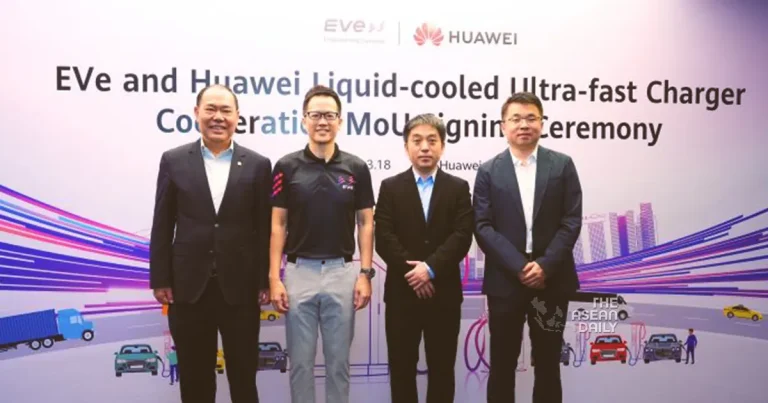19-3-2024 (SINGAPORE) Singapore is gearing up to revolutionize its electric vehicle (EV) charging infrastructure with the introduction of ultra-fast chargers capable of fully charging an EV in just 30 minutes. Scheduled for installation by the end of 2024, these chargers, touted as the fastest in South-east Asia, are poised to transform the landscape of EV adoption in the city-state.
EV-electric (EVe), a subsidiary of the Land Transport Authority, has inked a significant agreement with Chinese technology behemoth Huawei on March 18 to introduce these groundbreaking chargers. The move aims to cater to the needs of EV users, particularly taxi and delivery drivers, who require frequent and rapid recharging capabilities.
Traditionally, charging an EV at standard points in Housing Board carparks can take up to eight hours, posing a significant barrier for drivers reliant on their vehicles for extended periods. The advent of ultra-fast chargers promises to alleviate this challenge, offering a rapid alternative that aligns with the demands of modern-day mobility.
Despite the current generation of EVs potentially lacking the capacity to fully exploit the maximum charging speed of these ultra-fast chargers, EVe anticipates forthcoming models to leverage these capabilities fully. In a strategic move towards sustainability, the agreement between EVe and Huawei incorporates the utilization of solar panels and battery energy storage systems to power the chargers, thereby mitigating the strain on the electricity grid.
Overseeing the rollout of Singapore’s public EV charging network, EVe is working in tandem with five operators covering various parts of the city. However, the finer details of the deployment, such as the precise number and locations of the ultra-fast chargers, remain under discussion. EVe’s chief executive Derek Tan revealed to The Straits Times that initial plans include the installation of “one to two” chargers by the year’s end, each equipped with two charging nozzles to accommodate multiple vehicles simultaneously.
Selecting suitable sites for charger installation poses its own set of challenges, with considerations ranging from adequate power supply to the accommodation of larger EVs like minibuses. Mr. Tan emphasized the importance of avoiding costly upgrades to charging infrastructure, underscoring the need for prudent site selection.
In terms of operational logistics, charging service operators will negotiate terms with Huawei, including pricing agreements, prior to the chargers’ integration into the network. Although neither EVe nor Huawei provided specific cost estimates for the installation of these ultra-fast chargers, the technology’s potential to deliver 200km of operating range in just five minutes underscores its transformative impact on EV charging dynamics.
Huawei’s ambitious vision extends beyond Singapore, with plans to establish 100,000 charging stations featuring similar ultra-fast chargers across more than 340 cities and major highways in China by 2024. Central to the charger’s rapid charging capabilities is its innovative liquid cooling system, which effectively regulates operating temperatures, thus circumventing the thermal limitations that hinder conventional charging methods.
The version of the charger slated for launch in Singapore has been slightly modified, with a rating of 480 kilowatts to comply with the existing national EV charging standards. This adjustment ensures alignment with regulatory parameters, with the charger’s speed measured in kilowatts.
In a bid to expand accessibility, the Huawei chargers will be among the 120 fast chargers earmarked for installation across approximately 60 HDB carparks in locations such as Boon Lay, Redhill, Kallang Bahru, Tampines, and Woodlands. As of March 18, Singapore boasts 2,984 publicly accessible EV chargers, a figure set to increase substantially with the proliferation of ultra-fast charging infrastructure.
Logistics giant Ninja Van Singapore, with over 10 electric vans in its fleet, underscores the importance of diversified charging options. According to a company spokesperson, offering varying charging speeds caters to individual driver preferences, thereby enhancing operational efficiency and flexibility.




